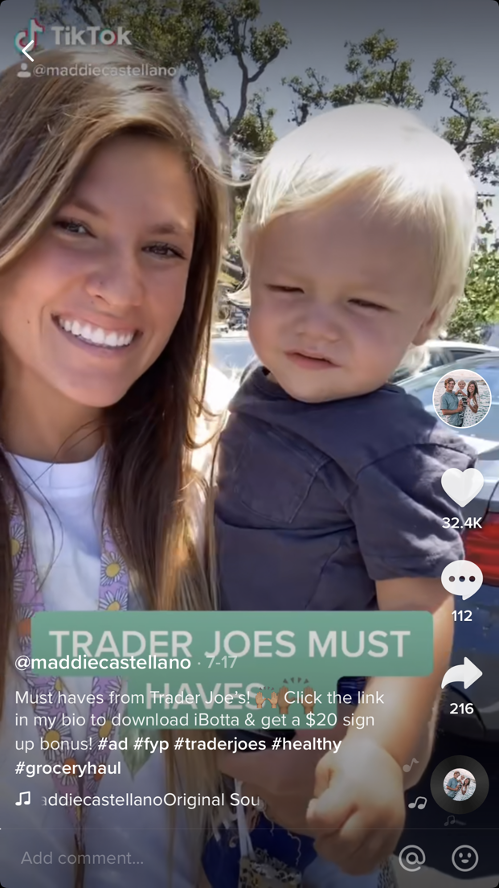Walk around anywhere and you’ll spot a dozen people glued to their phones, probably using social media. In less than a decade, social media has evolved massively — from simply being a means of connection and source of entertainment, to now having been fully integrated into every aspect of our lives through how we shop, advertise, and socialise. In fact, social media has also opened doors for brands to expand their reach to consumers so that they no longer have to be limited by their connection with us in the physical world, but can now connect with us in the digital space as well! With the proliferation of brands online and on social media, new forms of marketing have emerged to help brands cope with the noise and stand out from the clutter. This includes the influencer marketing wave that took brands, especially those on social media, by storm.
What is Influencer Marketing?
Influencer marketing is a form of collaboration between a brand and an influential individual to promote either a product, a service or even a campaign. It is a hybrid of old and new marketing techniques whereby the idea of celebrity endorsements is placed into content-driving marketing campaigns, especially on social media (Source: influencermarketinghub.com). These individuals, also commonly known as social media influencers, usually have a dedicated following on their social media platforms and are seen as experts within their niche fields (Source: sproutsocial.com). How influencer marketing works is that it taps onto the sizable following of these influencers, and leverages on the existing trust and relationship that they have already established with their followers. As such, any recommendations made by the influencers will serve as social proof for brands and their products, as this is usually perceived as more authentic than the brands making claims and product recommendations on their own. Influencer marketing is thus preferred by many brands because it helps to increase awareness and boost conversions. To delve deeper into the different types of influencers and the effectiveness of influencer marketing, read our previous article on the topic.
What are the common influencer marketing mistakes?
Given its proven effectiveness and surge in popularity, many brands have already adopted influencer marketing in their campaign strategies and marketing mix. However, just with any strategy, mistakes are bound to happen. To help you have a better planning process and increase your chances of having a successful influencer marketing campaign, here are 5 common mistakes to look out for and avoid making.
1. Not finding the right influencer(s)
Finding the right fit is much more important than approaching the social media influencer with the highest follower count. Choose someone whose values and personality aligns with that of your brand. Question: Are they relevant to your brand’s campaign? Do they embody the message you’re trying to communicate? Are their followers your target audience? It is common for brands to focus too much on the follower count and end up neglecting the power of micro and nano influencers, especially in niche markets.
Why is that? Micro and nano influencers tend to have a more passionate and dedicated group of followers who share similar interests and values as the influencers they follow. They respect them as an expert in their field, and pay more attention to the advice and tips these influencers give. This also explains why more and more brands are starting to collaborate with micro and nano influencers. In top performing influencer marketing campaigns, brands tend to use a mix of different tiered influencers to help drive ROI and success. Depending on your campaign objective, find the right mix of influencers between these three tiers — macro influencerswho are often celebrities with 100k followers and above, micro influencers with 10k to 100k followers, and the everyday nano influencers who are your average social media users with up to 10k followers (Source: socialtoaster.com).
Enter LADY BOSS Glasses. Being an all-female owned and run company, LADY BOSS Glasses believes in women supporting fellow women. As part of its promotional strategy, the brand opened up a new ambassador program in which Instagram users can submit their applications for a chance to be featured on their Instagram page. Each month, a total of 10 of these Instagram influencers will be picked to promote the brand’s products. Apart from the fresh faces every month, this program also sought to offer more opportunities for new and upcoming influencers to be featured. To find the right fit, they handpicked influencers who embodied characteristics of the brand such as those who carried a positive vibe, and actively engaged and connected with their audience.

Furthermore, the relationship influencers have with their followers should not be underestimated. A highly engaged audience can usually garner high click-through rates on any post the influencer puts out. This explains why in many cases, micro influencers tend to have higher engagement rates than macro influencers. For instance, you may have come across influencers with 200k followers but only 10 likes/comments on their posts.
Thus, it is crucial that brands understand the importance of selecting the right influencers as it can go a long way in helping them to achieve their campaign objectives.
2. Short-term goal VS long-term arrangement
Finding and partnering with an influencer that fits your brand is a great start! However, many brands’ partnership and collaboration with these influencers tend to die down once the campaign ends, which doesn’t necessarily have to be the case. Posting a sponsored Instagram post is useful, but one post is not going to go a long way in influencing perceptions and driving sales. In fact, all the best performing influencer marketing campaigns are usually the ones with long-term arrangements — the ones that allow your audience to associate a face with the brand for a time, the ones that turn these influencers into brand ambassadors. Such an arrangement allows brands to form a stronger connection with their influencers — enabling them to portray the brand in a more natural and authentic way.
3. A broken line of communication
The Oxford dictionary defines collaboration as “the action of working with someone to produce something”. However, many brands who seek to “collaborate” with influencers fail to involve them and “work with them” on the content planning process. Instead, they issue instructions that dictate how the post deliverables should look like, failing to take into account any ideas that these influencers may have, or any inputs on how best to target their followers (who they usually have a better understanding of). The lack of proper communication here can thus lead to the post coming off as branded, advertorial and inauthentic, as opposed to influencers who are given the freedom to inject their own style and personality into it (we will explore a good example of this later on in point 5).
Brands have to therefore learn how to strike a balance in the way they communicate — ensuring that the influencers are still involved in the content planning process, rather than simply being tasked with directives that have already been set. The key here is to include influencers in the conversation, and provide guidelines that are defined enough to keep the branding intact, but broad enough to allow them to have their take on it as well.
With more collaborative discussions and open lines of communication, this can help brands and influencers to also come to an agreement on how all these valuable content that is created can be used and repurposed as well. Influencers who create and post content are great, but don’t just stop there, ask to repurpose these content onto your brand’s social media platforms and under the community section on your website too (Source: theshelf.com). This helps consolidate all the different parts of the campaign and all the influential voices for your brand, which adds to your brand’s credibility when others land on your page. Check out Glossier for instance, where it repurposed its influencers’ content and posted them on its own account.

4. Unclear goals and campaign expectations
What is the purpose of your brand campaign? What do you want to achieve out of it? Influencer marketing can be super effective in driving sales and conversions, but only if it is done right. Set clear goals and objectives for your campaign — be it increasing social engagement, building brand awareness, or driving traffic to your website — and communicate it to your influencers to see how they can aid your brand in achieving these goals. Establish a clear CTA (call to action) in all the content that they put out, and encourage them to weave it into the captions of their posts — but be open to any alternative ideas they may have too. Also, it would be useful to include some form of qualitative measurements to the campaign’s KPIs as well, as this helps both the brand and the influencer to not be restricted by numbers alone, but to be more open to explore new and creative (and sometimes less measurable) ways to reach, entertain and educate their followers.
A major part of a successful influencer marketing strategy lies in being able to clearly communicate your brand’s objectives, then putting your brand into the hands of the influencers, and trusting them to share it with their followers in their own way, so as to meet those objectives. As long as both parties have this mutual understanding, half the battle is already won.
5. Overdoing branding
Earlier we mentioned that the beauty behind influencer marketing is to let the authenticity of the influencer shine through the content — so leave it to them and their creative spin. Otherwise, over-branding the content or making it overly promotional, could backfire and even cause your audience to be repelled by it (Source: business2community.com). Furthermore, this can also ruin the influencers’ reputation as their followers start to perceive them as inauthentic and “advocating for brands and products only because they have been sponsored to do so”, resulting in their loss of trust toward these influencers. In the end, both parties will be left worse than when they started.
On TikTok, influencer marketing is the most effective form of marketing given that it is a primarily human-centered platform. Unlike Facebook and Instagram that has a good mix of human-centered content and purely visual-based ones, TikTok is host to a variety of video content that has one thing in common — it usually involves a person in front of the camera (whether its front cam or back cam, a person talking or a person dancing). Maddie Castellano (@maddiecastellano) for instance, has managed to use her TikTok account to promote brands and businesses that align with who she is and the content she puts out. Generally, her videos are very wholesome and family-oriented, and are directed toward living a healthy lifestyle.

One brand she has worked with was Pipettebaby, with their non-toxic hand wash & lotion. A mother herself, Maddie advocates for the product by bringing in her baby boy to show how the product is safe to use on babies.
In a similar vein, she also collaborated with Trader Joe’s to showcase her “Trader Joe’s Must Haves” during her grocery shopping. The CTA in her caption was very clear in letting her followers know that if they sign up via the link in her bio, they get to enjoy a $20 bonus.

Again, because of her personality on social media, the brands and products featured on her account do not feel out of place or too promotional, which is a good example of not over-branding. In fact, doing it her way, makes the content feel personal and authentic. Although these few videos are branded content, it does not stray away from the rest of her personal content (and that’s the goal brands should achieve with their influencers — to find that alignment and synergy!).
Start influencing
Not every marketing strategy is perfect, nor will every campaign be a success. However, our role as marketers and brands is to look out for mistakes that can be avoided, so that we increase our chances of success. With this, learn to approach influencer marketing with an open mind, define and communicate what your objectives are and who your target market is, find the right influencers — those who align with your brand, build a strong relationship with them, and respect their creativity. If you need any help choosing the right influencers or are looking to plan an influencer marketing campaign, feel free to drop us a message! Having worked with brands, influencers, as well as our partner influencer agencies, we’ll be more than happy to help!
— —
Hero image: Karolina Grabowska, Pexels
